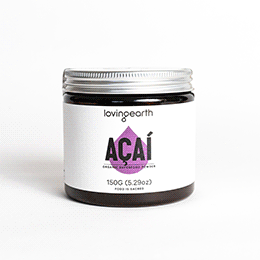
Kale comes from a family of over-achievers. With cousins like broccoli, cauliflower, collard greens and brussels sprouts, it has a lot to live up to in terms of nutrient goodness…but fortunately kale is no black sheep!
Kale is a leafy green vegetable with varieties found in most parts of the world including Europe, Africa and parts of Asia. There are many variations of kale differing in size, leaf type and colour. The colour ranges from light green to dark green and even violet green and violet brown. The most commonly available type of kale is the sweet and mild Curly Kale. Dino, Lacinato, Tuscan, Siberian, Redbor Nero, Black Palm, Kamome Red Kale and Red Russian Kale are some of the other varieties. Some of these are slightly bitter and may be used for a garnish or simply as beautiful plants for the garden, others are great for salads, smoothies, stir fries, wraps and of course our own personal favourite – Kale Chips!
Kale is a descendant of Wild Cabbage, which is said to have originated in Asia. It was brought over to Europe around 600 B.C. and soon became very common across the continent, enjoyed by the ancient Greeks as well as the Romans. It was a popular food amongst peasants all the way through the Middle Ages, seeing a return to British dinner tables during World War 2. Due to heavy rationing, people were not able to meet their nutritional needs. This is when kale growing was encouraged, as it’s very easy to grow and a real heavyweight in terms of nutrition.
One of the best features of kale is that it has a beautifully earthy flavour. When dehydrated or baked at just the right temperature, it takes on a crispy, crunchy consistency just like a potato chip. Add a special concoction of flavours and you have a wonderful, nutritious and delicious snack to munch on at any time of day. This is one of the best ways to get your dose of greens since Kale Chips are absolutely scrumptious!
There’s a lot of buzz surrounding kale these days - and deservedly so. Kale is one of the most nutrient dense foods on the planet, making it a true superfood. It’s an extremely rich source of Vitamins A, K and C, Beta Carotene and a host of minerals such as Iron and Calcium. It contains Lutein and Zeaxanthin, whch are carotenoids that protect eyes against cataracts and help prevent age-related macular degeneration. The kale family also contains Sulforaphane and indole-3-carbanol, which are known to have cancer-fighting properties and help repair DNA in cells.
Kale is also a source of Folate which is a B vitamin. Folate deficiencies result in an increased risk of diseases like obesity, Alzheimer’s, stroke and depression. Researchers have already identified over 45 Flavonoids in kale that provide considerable antioxidant and anti-inflammatory benefits by reducing risks related to oxidative stress and chronic inflammation. No wonder kale is such a popular ingredient in so many healthy kitchens!
It is important to prepare kale in the right way to prevent nutrient loss. For example, boiling kale is said to decrease the level of Sulforaphane, the cancer-fighting substance. Steaming or stir frying, however, does not seem to affect it too much. Chopping or cutting is good, as it releases the Sulforaphane. When steamed, the fibres in kale bind with the bile acids in our digestive tract and helps to remove them. This has a direct impact on the cholesterol levels in the body.
So the bottom line is – if you want to feel fresh, increase your energy levels and reduce the risk of disease, eat lots of green leafy vegetables - especially kale. Full of nutrients and minerals, when prepared correctly the queen of the greens will present you with numerous benefits!


